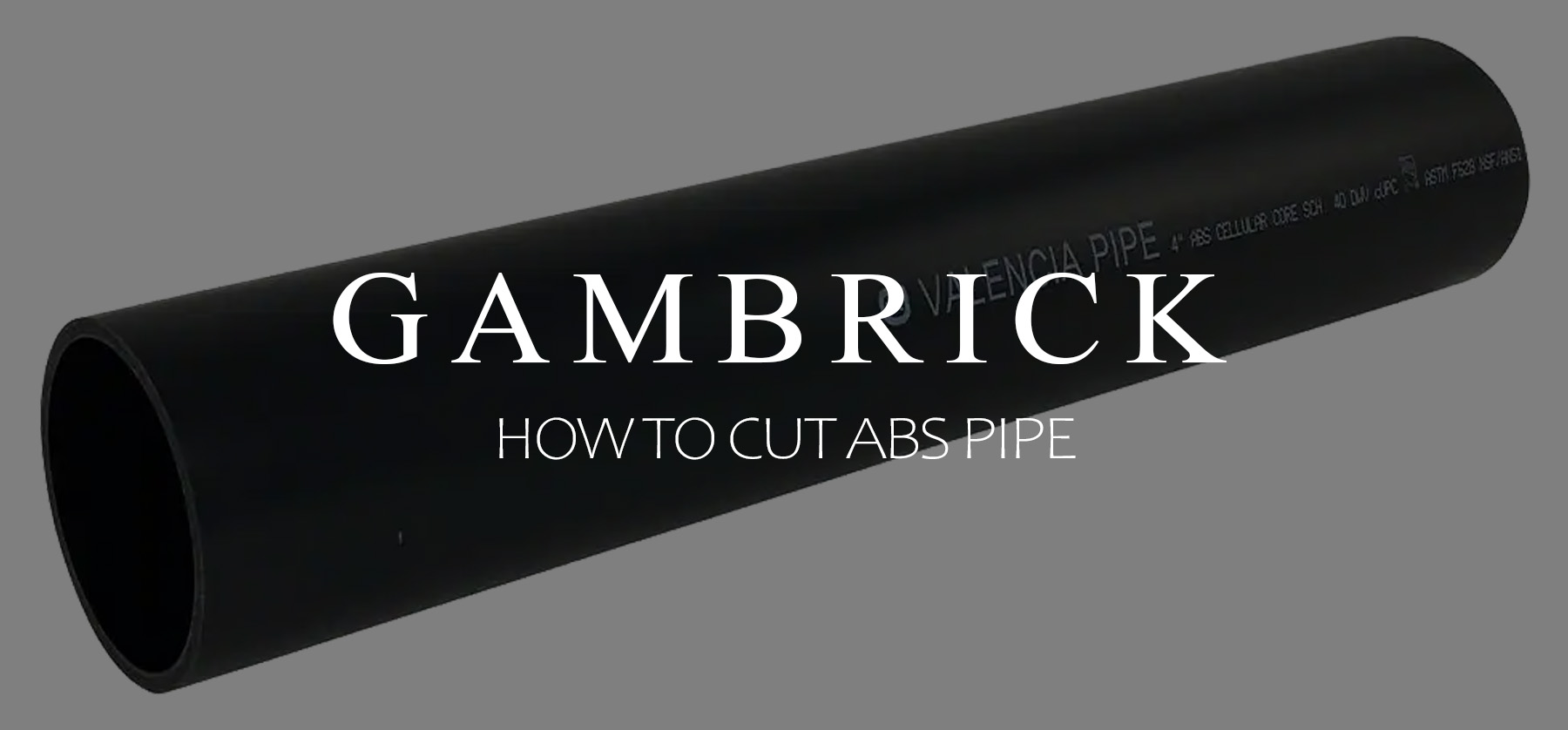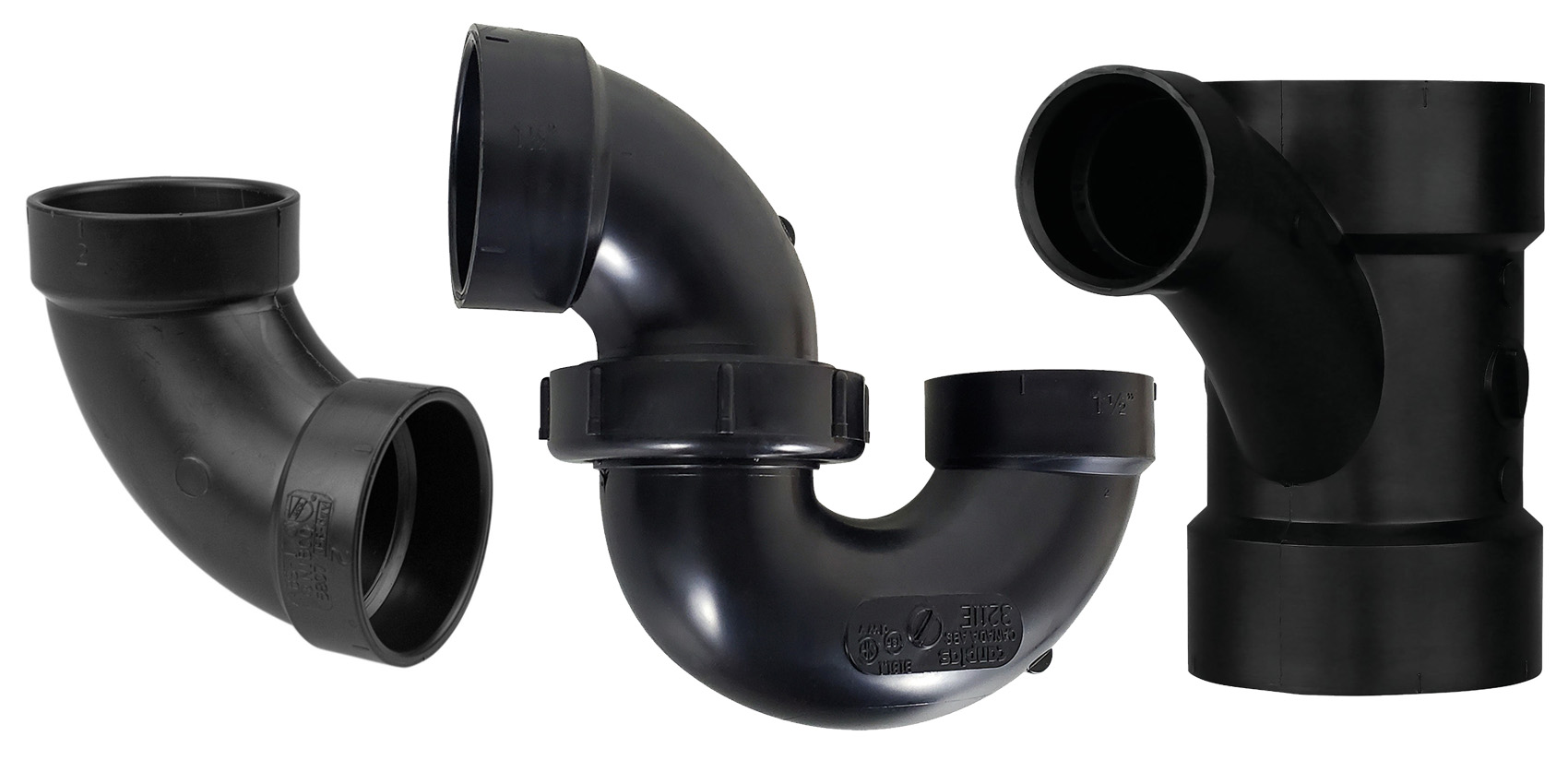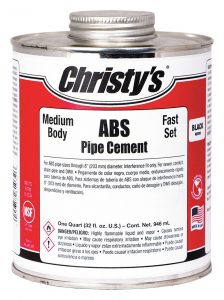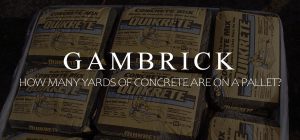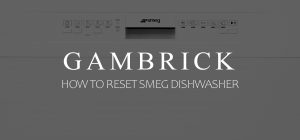How To Cut ABS Pipe
ABS (Acrylonitrile Butadiene Styrene) is a hard, black, plastic pipe that’s used in homes for both sewer and vent piping. It comes in diameters ranging from 1 1/2 to 4 inches and up to 20 foot long. Sections of ABS pipe are joined together with ABS fittings like couplings, elbows and Tees using ABS cement. How you cut an ABS pipe depends on if it’s installed or not. If the ABS piping is already installed, the best way to cut it is with a hacksaw or Sawzall. If the ABS pipe is not installed, the best way to cut it is with a hacksaw, Sawzall or chop saw. I prefer using a chop saw because it keeps the cut end extremely level and even.
The type of blade you use is very important when cutting ABS pipe. Saw blades come with different amounts of teeth per inch (TPI). The more teeth there are the cleaner the cut will be. The best blade for cutting ABS pipe is 14 TPI, which is a finish blade. The cut will be very clean with fewer burs on the edge. Blades with higher TPI are fine, but avoid using lower TPI blades because the edge will be rough.
Before you start cutting, use a tape measure to mark the cut with a pencil. Use a speed square or framing square to mark a guide line completely around the pipe. A guide line will help you cut the pipe even and square.
When you start cutting with your tool of choice, do it slowly and stay on the line. If your edge isn’t level it makes joining the pipe with a fitting harder to do and weaker.
Once your cut is complete, use a file, utility knife or sandpaper to remove the burs.
The Best Way To Cut ABS Pipe
ABS is a hard, black, plastic pipe that’s used for both sewer and vent lines. The best way to cut it depends on if the pipe is installed or not. When you’re cutting installed ABS, the best way to cut it is with a hacksaw or Sawzall. But if the ABS is not installed, the best way to cut it is with a chop saw, hacksaw or Sawzall. I prefer using the chop saw because it keeps the cut end clean and level.
In addition to choosing the right tool, you also need the correct blade. Saw blades come with varying amounts of teeth per inch (TPI). The best blade to cut ABS is a finish with at least 14 TPI. Using a blade with more teeth per inch is fine, but don’t use one with less. The pipe will cut rough with lots of burs to clean.
Make sure to measure and mark the cut with a pencil. Use a speed square or framing square to draw a line completely around the pipe. Using a guide-line is very important because it helps keep the cut level and straight.
Once you’re done cutting, use a file, utility knife or sandpaper to clean the edge.
Choosing the right tool and blade for cutting ABS makes the job faster, easier and more accurate.
How to Cut Installed ABS Pipe
Cutting ABS pipe that’s installed in a home’s plumbing system is slightly different than cutting it on the ground. The pipe may be in a crawl space, basement, ceiling cavity or inside a wall. The techniques and tools slightly change and the job becomes more difficult.
If you’re cutting in a tight space, a Sawzall works better than a hacksaw because the blade doesn’t have to travel as far. Sawzall blades come in different lengths. Chose one that’s about 2 inches longer than the pipes diameter. This extra length accounts for the back and forth sawing motion of the blade.
Pro Tip: If you wrap the pipe with some duct tape where you’ll be cutting, it leaves a cleaner cut with less burs.
Step 1. Measure & Mark The Pipe
Start by measuring and marking the pipe. Use a tape measure, pencil or wax pen. Place a speed square or framing square against the pipe to help you draw a straight, level and even line. Don’t rush this step. A guideline will help you make a more accurate cut.
Step 2. Cut The Pipe
The best tools to cut an installed ABS pipe are a hacksaw or Sawzall. Both cut in the same way by rocking the blade back and forth against the pipe. Use a finish blade with 14 TPI (Teeth Per Inch). More teeth are fine because they’ll make a clean cut must don;t use a blade with less. The cut will be rough and you could chew up the pipe.
Rest the blade on the mark and slowly start to saw.
Sawzall: Pull the trigger lightly. It doesn’t take full power to cut through ABS. If you have a fresh blade the cut is easy to make. It’s more important to take your time and make an accurate cut than it is to do it quickly. A full size Sawzall requires both hands on the saw to cut, but if you’re using a mini Sawzall, keep one hand on the pipe and one on the saw. Apply light downward pressure as you cut to guide the blade.
Hacksaw: Apply slight downward pressure on the saw as you move it slowly back and forth across the pipe. Keep the saw moving until you achieve a perpendicular clean cut through the pipe. Place your thumb on one side of the saw to help stabilize it as you cut.
In a tight space, a Sawzall works better than a hacksaw because the blade doesn’t have to travel very far. Use a blade about 2 inches longer than the diameter of the pipe.
Step 3. Clean The Cut
Once the cut is made, the edge of the pipe will likely has some burs. Clean them off with a utility knife, sandpaper or a file. If you taped the pipe before cutting, the edge will be cleaner with less burs.
How To Cut Uninstalled ABS Pipe
Cutting ABS pipe before it’s been installed is easy to do. The best way to do it is with a chop saw or miter saw. Place the pipe horizontally on the saw’s base against the back guide. Make sure the pipe is level and that the blade is set to 90°. If you have a compound saw, make sure the saw is 90° to the pipe and not angled left to right. This will ensure a perpendicular cut.
The best type of blade to cut ABS is a finish blade with 14 TPI (Teeth per Inch). It’s OK to use more TPI but not less. Fewer teeth is for rough demo cuts and will chew up the pipe.
A grinding blade is one of the best types of blade for cutting ABS pipe because it sands the edge clean as it cuts.
You can also cut ABS with a hacksaw or Sawzall. The same rules apply for blade types. Use at least 14 TPI or a grinding blade.
Step 1. Measure & Mark The Pipe
Start by measuring and marking the pipe. Use a tape measure, pencil or wax pen. Place a speed square or framing square against the pipe to help you draw a straight, level and even line. Don’t rush this step. A guideline will help you make a more accurate cut.
Step 2. Cut The Pipe
The best tools to cut uninstalled ABS pipe are a chopw saw, miter saw, hacksaw or Sawzall. Use a finish blade with 14 TPI (Teeth Per Inch) or a grinding blade. More teeth are fine because they’ll make a clean cut must don;t use a blade with less. The cut will be rough and you could chew up the pipe.
If you’re using a Sawzall or hacksaw, rest the blade on the mark and slowly start to saw. Clamp the pipe in a vise to keep it steady. If you’re using a chop or miter saw, pull the trigger and brind the blade down in a slow even motion.
Sawzall: Pull the trigger lightly. It doesn’t take full power to cut through ABS. If you have a fresh blade the cut is easy to make. It’s more important to take your time and make an accurate cut than it is to do it quickly. A full size Sawzall requires both hands on the saw to cut, but if you’re using a mini Sawzall, keep one hand on the pipe and one on the saw. Apply light downward pressure as you cut to guide the blade.
Hacksaw: Apply slight downward pressure on the saw as you move it slowly back and forth across the pipe. Keep the saw moving until you achieve a perpendicular clean cut through the pipe. Place your thumb on one side of the saw to help stabilize it as you cut.
Chop/Miter Saw: Pull the trigger and bring the saw down in a slow and even motion. Once the cut is made release the trigger, then pull the pipe out. Don;t remove the pipe while the blade is spinning.
Step 3. Clean The Cut
Once the cut is made, the edge of the pipe will likely has some burs. Clean them off with a utility knife, sandpaper or a file. If you taped the pipe before cutting, the edge will be cleaner with less burs.
The Best Tools For Cutting ABS Pipe
ABS is a tough and durable pipe made out of very hard plastic. There are a few different tools that can cut it and some are definitely better than others. Which tool is best for cutting ABS depends on the situation. If the pipe is uninstalled the best tool to cut it is a chop or miter saw. However, if the pipe is already installed, the best tool to cut it is a Sawzall.
In addition to choosing the right tool, you also have to select the best blade. Use a finish blade with at least 14 TPI (Teeth Per Inch) or a grinding blade. If the blades has less teeth per inch than 14, it can chew up the pipe which leaves a very rough edge.
Chow Saw
The best tool to cut ABS pipe before it’s installed is a chop or miter saw. Use a finish blade with at least 14 TPI or a grinding blade. Position the pipe flat against the saw’s base and rear guide. Make sure the blade is perpendicular to the pipe and not on an angle. Pull the trigger and bring the blade down slowly. Once the cut is made, release the trigger and remove the pipe.
Don’t move the pipe until after the blade has stopped spinning.
If you used the right blade there should be a clean edge. But if there are a few burs, clean them off with a file, utility knife or some sandpaper.
Sawzall
A Sawzall is the best tool for cutting ABS pipe if it’s already been installed. But it’s also very effective if the pipe is uninstalled. They’re better than a hacksaw in tight spaces because the blade doesn’t have to travel very far in order to cut the pipe. Use a blade that’s about 2 inches longer than the diameter of the pipe. The best Sawzall blade is a finish blade with at least 14 TPI or a diamond coated grinding blade.
Line the blade up with your mark and pull the trigger slowly. It doesn’t take much power to cut through an ABS pipe when you have the right blade. Using too much power will cause the blade to skip or cut unevenly.
Once the cut is complete, clean the edge with some sandpaper, a file or a utility knife.
Hacksaw
A hacksaw is a good tool for cutting ABS pipe either installed or uninstalled. But it’s better if the pipe is uninstalled. Hacksaws need about 12 inches of space for the blade to rock back and forth properly. Installed ABS pipe is usually in tight spaces like a crawl space, wall or ceiling cavity where there’s less room to work.
Like a Sawzall or chop saw blade, use a finish blade with at least 14 TPI. Once the cut is complete, clean the edge with some sandpaper, a file or a utility knife.
Copper Tubing Cutters
Copper tubing cutters can be used to cut more than just copper. They can also be used to cut plastic piping like ABS and PVC. Tubing cutters are specialized tools designed to cut round tubing. The cutter grips the pipe between rollers and has a very sharp cutting wheel that rotates around the pipe. The cutter is tightened as it spins around the pipe to cut a little at a time.
If you use a tubing cutter to cut ABS pipe, make sure it’s a copper cutter instead of a PVC cutters. ABS pipe is too hard and brittle to be cut with a PVC pipe cutter.
Tubing cutters can be used either on either installed or uninstalled pipe depending on the cutter’s design. Some are power operated which are generally too large to cut installed pipe.
Saws
Most saws with a finish or grinding blade can cut ABS pipe. They’re not as good as a chop saw or Sawzall, but they’ll still get the job done.
- Jigsaw: A jigsaw with a finish blade can cut through ABS pipe, however the blade is very short so you have to spin the saw around the pipe or spin the pipe as you cut. For this reason, a jigsaw should only be used on uninstalled ABS. Like a Sawzall, you can vary the speed the jigsaw cuts by how hard you pull the trigger. Don’t use full power or you’ll risk making the saw jump which can damage the pipe.
- Circular Saw: A circular saw can easily cut through ABS pipe if you use a finish blade. However, the blade is very short and can’t cut completely through the pipe like a chop saw can. You’ll have to spin the pipe as you cut to get all the way through. Unlike a jigsaw or Sawzall, circular saws do not have a variable speed trigger, so be very careful when you cut the pipe. I recommend clamping the pipe as you cut to keep it steady.
- Angle Grinder: An angle grinder can easily cut through ABS and if you have a large enough blade, it may be able to do it in a single pass. But be careful as you cut, angle grinders can be unstable and hard to make an accurate cut with.
What Is ABS Pipe?
ABS stands for Acrylonitrile Butadiene Styrene. ABS is a type of plastic used to make plumbing pipe that generally comes in black. It’s typically used in household plumbing for drains, vents and sewer pipes. Because the pipe is very strong and rigid, it’s also used in sewers and to insulate electrical wires. ABC comes in diameters ranging from 1.5 to 4 inches and up to 20 feet long. Sections of ABS pipe are cut and joined together with ABS fittings like couplings, elbows and Tees using ABS cement.
ABS pipe is strong and rigid enough to use above or below ground. It can withstand extremely cold and hot temperatures and is 100% waterproof. But you should not use it in direct sunlight because light can degrade the plastic.
One of the key benefits of using ABS pipe is that it’s less likely to deform in high temperatures vs PVC pipe, and it doesn’t corrode or rust like metal. It’s also resistant to a variety of chemicals which makes it ideal for use in industrial plumbing for factories or laboratories.
A downside of using ABS pipe is that it contains a chemical known as BPA, or bisphenol A. BPA has been linked to a variety of health concerns and can leach into the water that flows through it. For this reason, most plumbers use ABS pipe for vents and waste pipes but not supply lines.
What’s The Difference Between ABS & PVC Pipe?
ABS and PVC pipes are not the same thing and should not be used interchangeably. One of the main differences between them is that ABS pipes contain BPA, which stands for stands for Acrylonitrile Butadiene Styrene. This makes them more durable and long lasting. However, BPA has been linked to a variety of health concerns and can leach into water flowing through the pipe. According to the FDA, the current levels found in water flowing through ABS pipes are safe. But to be extra safe, many plumbers don;t use ABS piping for supply lines.
You can usually tell the two pipes apart by their color. PVC pipes are usually gray or white while ABS pipes are black.
- ABS pipes are stronger
- PVC pipes are more flexible
- Abs pipes are more cold and heat resistant
- PVC pipes are better at muffling sound
Both PVC and ABS pipes are connected with fittings. These include couplers, elbows and tees. But how you connect the pipe the the fitting is slightly different.
- ABS pipes use a single ABS cement to connect ABS pipes to fittings
- PVC pipes use a cement and a primer to connect pipe to fitting
The connection process differs for ABS and PVC pipes. With ABS installation, there is only one step to making a connection. They are connected using a special cement that does not need to dry before connecting the pipe. PVC pipes use a primer that has to be applied and fully dried before you can apply the cement.
In my opinion, ABS pipe is best for sewage, drains and vent pipes while PVC is better for supply lines.
Should I Use PVC Or ABS Pipes?
Before you make a choice between PVC and ABS pipe, check your local building codes. In some areas building codes will specify where ABS and PVC piping can be used. If there’s no code specifying a pipe material, you can use either type.
- ABS is more durable than PVC. It’s rigid, tough and temperature resistant. You can use it indoor and out, below grade or above. But it degrades in sunlight so you shouldn’t use it above grade where it’ll get hit by lots of sunlight. Because of how durable ABS is, it’s used in industrial applications and laboratories. ABS contains the chemical BPA which has been linked to several health concerns. It can leach into water flowing through the pipe in small amounts which are considered safe by the FDA. Because of this, ABS is better for waste pipe and vents but not supply lines.
- PVC is more flexible than ABS. It’s not as tough or temperature resistant as ABS, but it’s still durable enough for most residential and commercial applications. PVC can be used inside and out, below grade or above. Because it doesn’t contain BPA, it’s safer to use as a water supply.
ABS is slightly more expensive than PVC pipe, but it’s faster to install. Attaching ABS to fittings requires ABS cement, but PVC requires both glue and primer. ABS is harder pipe which cuts cleaner while PVC creates more burs that need cleaning. Overall it’s faster to install ABS vs PVC pipe.
Unless it’s a supply line or an exterior pipe exposed to sunlight, I prefer using ABS pipe. It’s a tougher material that’s more durable and easier to install. But I prefer using PVC for water lines.
Summary: How To Cut ABS Pipe
ABS (Acrylonitrile Butadiene Styrene) is a hard, black, plastic pipe that’s used in homes for both sewer and vent piping. It comes in diameters ranging from 1 1/2 to 4 inches and up to 20 foot long. Sections of ABS pipe are joined together with ABS fittings like couplings, elbows and Tees using ABS cement. How you cut an ABS pipe depends on if it’s installed or not. If the ABS piping is already installed, the best way to cut it is with a hacksaw or Sawzall. If the ABS pipe is not installed, the best way to cut it is with a hacksaw, Sawzall or chop saw. I prefer using a chop saw because it keeps the cut end extremely level and even.
The type of blade you use is very important when cutting ABS pipe. Saw blades come with different amounts of teeth per inch (TPI). The more teeth there are the cleaner the cut will be. The best blade for cutting ABS pipe is 14 TPI, which is a finish blade. The cut will be very clean with fewer burs on the edge. Blades with higher TPI are fine, but avoid using lower TPI blades because the edge will be rough.
Before you start cutting, use a tape measure to mark the cut with a pencil. Use a speed square or framing square to mark a guide line completely around the pipe. A guide line will help you cut the pipe even and square.
When you start cutting with your tool of choice, do it slowly and stay on the line. Once your cut is complete, use a file, utility knife or sandpaper to remove the burs.
If you have any questions or comments about how to cut ABS pipe, email any time.
